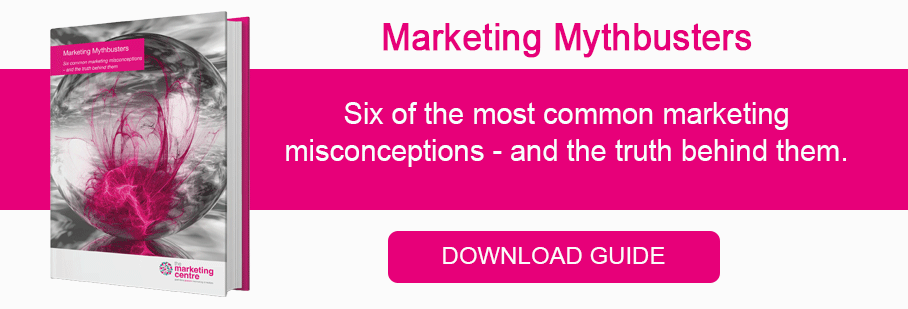When it comes to marketing, the world abounds with bad advice - soft soap and snake oil from self-proclaimed experts who don’t have the credentials, experience or clear process to back up their claims.
On top of this, business owners are often unclear about the role of marketing in the business - what it’s for, how it works, and how to know it’s doing what it should.
Between the outright fibs and the lack of understanding, there’s a perfect climate for marketing myths to flourish. That’s why our marketing directors have picked out the most commonly misunderstood aspects of marketing - the misguided or misinformed ideas we keep on hearing - to break down.
Find everything you need to understand about building and improving your marketing strategy in this guide.
First on the list: “Marketing is all about lead generation.”
What is the myth?
New leads mean more business, and new leads are marketing’s job.
New leads are a noble goal, but to say marketing is all about lead generation is to misunderstand the scope of the marketing function. Lead generation is one small part of the marketing function. Without proper customer management and sales alignment to ensure the leads are warmed up and followed up on in good time, 71% of leads generated go to waste.
- You may like: Marketing Theory for Non Marketers - Lead Generation
To make the most of your leads, you need to cover the strategic elements of marketing. You need to know your value proposition (what you’re selling), your target segments (who you’re selling it to) and their pain points (why they want to buy it). Basically: you need to know what you’re looking for before you go looking for it.
What is the truth?
Our Marketing 360 identifies four fundamental functions within a business, each of which operates at three levels: strategic, operational and support. Lead generation performs one of these functions at strategic level: it informs other activities and moves customers along to other functional points in the marketing machine. Here’s how lead generation fits into the strategic tier - and how it informs the rest of its function.
1. Define: Establishing a brand
This function is all about answering questions: Who is your customer and what are their needs? What is the value proposition of your company - what do you actually do for a client? These lead to further questions - what is your messaging and your branding? What is the culture in your company? The answers to these questions inform everything else you do - they should be apparent throughout the rest of your marketing activities.
2. Find: Lead generation
Finding customers, at the strategic level, is where lead generation fits in. If you’re in B2B, you’re looking for the decision makers, and in B2B or B2C, you’re establishing how your potential customers should be segmented, what routes to market they take and, consequently, the best mix of marketing channels to use. That feeds down into the operational level - implementing your marketing strategy by actually communicating with customers - and the support level, identifying the appropriate technology to support your business’ growth.
3. Win: Sales process
This function leads on from lead generation: it’s about your methodology to win sales, the tools you use to move customers along the funnel, and what accounts your sales people need to target next. This is where sales alignment lies - your sales and marketing teams need to share an understanding of their role in the journey toward a conversion, and when the customer should become sales’ responsibility.
4. Keep: Customer retention
Finally, there’s the hidden gem of marketing: customer retention. Finding the proper support and after-sales marketing efforts that will keep the customer engaged and willing to purchase again. This is where you identify and structure the opportunities and process for cross selling and upselling; it’s also where you listen to your customers and act on their feedback.
All of these functions have equal weight: lead generation can’t do the whole job. Marketing’s role is to test and measure different approaches, report and analyse on what works best, setting a process and segmenting the audience. At that point, the leads and conversions will start rolling in.
To see how we’ve put our approach into practice - and how our Marketing 360 has helped other businesses make sense of their marketing - check out our case studies.





